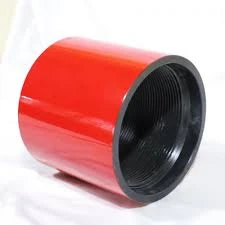- Afrikaans
- Albanian
- Amharic
- Arabic
- Armenian
- Azerbaijani
- Basque
- Belarusian
- Bengali
- Bosnian
- Bulgarian
- Catalan
- Cebuano
- Corsican
- Croatian
- Czech
- Danish
- Dutch
- English
- Esperanto
- Estonian
- Finnish
- French
- Frisian
- Galician
- Georgian
- German
- Greek
- Gujarati
- Haitian Creole
- hausa
- hawaiian
- Hebrew
- Hindi
- Miao
- Hungarian
- Icelandic
- igbo
- Indonesian
- irish
- Italian
- Japanese
- Javanese
- Kannada
- kazakh
- Khmer
- Rwandese
- Korean
- Kurdish
- Kyrgyz
- Lao
- Latin
- Latvian
- Lithuanian
- Luxembourgish
- Macedonian
- Malgashi
- Malay
- Malayalam
- Maltese
- Maori
- Marathi
- Mongolian
- Myanmar
- Nepali
- Norwegian
- Norwegian
- Occitan
- Pashto
- Persian
- Polish
- Portuguese
- Punjabi
- Romanian
- Russian
- Samoan
- Scottish Gaelic
- Serbian
- Sesotho
- Shona
- Sindhi
- Sinhala
- Slovak
- Slovenian
- Somali
- Spanish
- Sundanese
- Swahili
- Swedish
- Tagalog
- Tajik
- Tamil
- Tatar
- Telugu
- Thai
- Turkish
- Turkmen
- Ukrainian
- Urdu
- Uighur
- Uzbek
- Vietnamese
- Welsh
- Bantu
- Yiddish
- Yoruba
- Zulu
Understanding the Key Differences Between Casing and Tubing in Oil and Gas Operations
The Differences Between Casing and Tubing in Oil and Gas Wells
In the oil and gas industry, casing and tubing play crucial roles in the drilling and production stages of a well. While they may seem similar at first glance, they serve different functions and have distinct characteristics. Understanding these differences is essential for anyone involved in or studying petroleum engineering.
What is Casing?
Casing is a series of pipes that are installed in the wellbore to stabilize the walls of the hole and prevent collapse. During the drilling process, the wellbore is drilled to reach the desired depth, and casing is then cemented in place to protect the well from external pressures and environmental contaminants. The primary purposes of casing include
1. Well Integrity Casing ensures that the well maintains its structural integrity over time. It prevents the wellbore from collapsing and allows for safe drilling and production operations.
2. Isolation of Formations Casing serves to isolate different geological formations within the wellbore. This separation helps to manage the flow of hydrocarbons and prevents unwanted fluids from entering the production zone.
3. Environmental Protection The casing acts as a barrier to protect groundwater and surface environments from contamination caused by drilling fluids or hydrocarbons.
Casing materials are typically made from carbon steel, which is resistant to corrosion and can withstand high pressures and temperatures. Different sizes and grades of casing are used, depending on the specific requirements of the well being drilled.
What is Tubing?
Tubing, on the other hand, is a smaller diameter pipe that is installed inside the casing after the well has been completed. Tubing's main purpose is to transport the oil and gas from the production zone to the surface. Unlike casing, tubing is designed to handle the production flow under varying pressures and temperatures. The key functions of tubing include
1. Production Flow Tubing provides a conduit for the hydrocarbons to flow from the reservoir to the surface. Its design accommodates the necessary pressure to maximize production efficiency.
what are the differences between casing and tubing?

3. Customization Tubing can be tailored to meet specific production needs, such as different diameters or wall thicknesses, based on the well’s production characteristics.
Tubing is also made from corrosion-resistant materials, and it is often subjected to considerable wear and tear, making its material choice critical.
Key Differences
The primary distinctions between casing and tubing can be summarized as follows
- Functionality Casing is installed to maintain the structural integrity and isolate formations while tubing is specifically designed for transporting hydrocarbons to the surface.
- Installation Timing Casing is installed during the drilling phase and is cemented in place, while tubing is installed afterward, during the completion phase of the well.
- Size and Diameter Casing pipes are generally larger in diameter compared to tubing, which is smaller and fits inside the casing.
- Replacement and Repair Replacing tubing is simpler and less disruptive than replacing or repairing casing, which involves significant operational challenges.
In conclusion, while both casing and tubing are essential components of a well, understanding their distinct roles and differences is vital for optimizing oil and gas extraction processes. Each plays a crucial part in ensuring that wells are safe, efficient, and environmentally responsible.
-
Tubing Pup Joints: Essential Components for Oil and Gas OperationsNewsJul.10,2025
-
Pup Joints: Essential Components for Reliable Drilling OperationsNewsJul.10,2025
-
Pipe Couplings: Connecting Your World EfficientlyNewsJul.10,2025
-
Mastering Oilfield Operations with Quality Tubing and CasingNewsJul.10,2025
-
High-Quality Casing Couplings for Every NeedNewsJul.10,2025
-
Boost Your Drilling Efficiency with Premium Crossover Tools & Seating NipplesNewsJul.10,2025







